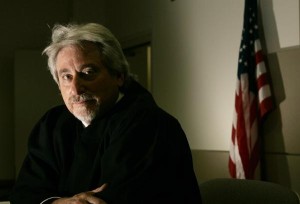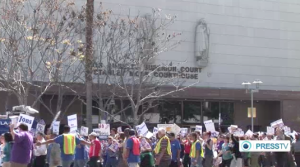Until the mainstream media returns its spotlight on the cuts in civil court funding, which we can assume will happen once the failing system causes a high-profile incident, those involved in the justice community continue to note the demise. One of those is the L.A. law firm of Girardi-Keese, which uses its website to list “only a few” of the effects.
They list: In Stanislaus County, parents must wait 17 weeks for a family court mediator; more than 100 courtrooms have closed statewide, more than 50 in Los Angeles County alone; paying a traffic ticket in San Francisco can take four hours; more than 2,600 court employees have lost their jobs.
The firm of course calls for changes. See their efforts here.

